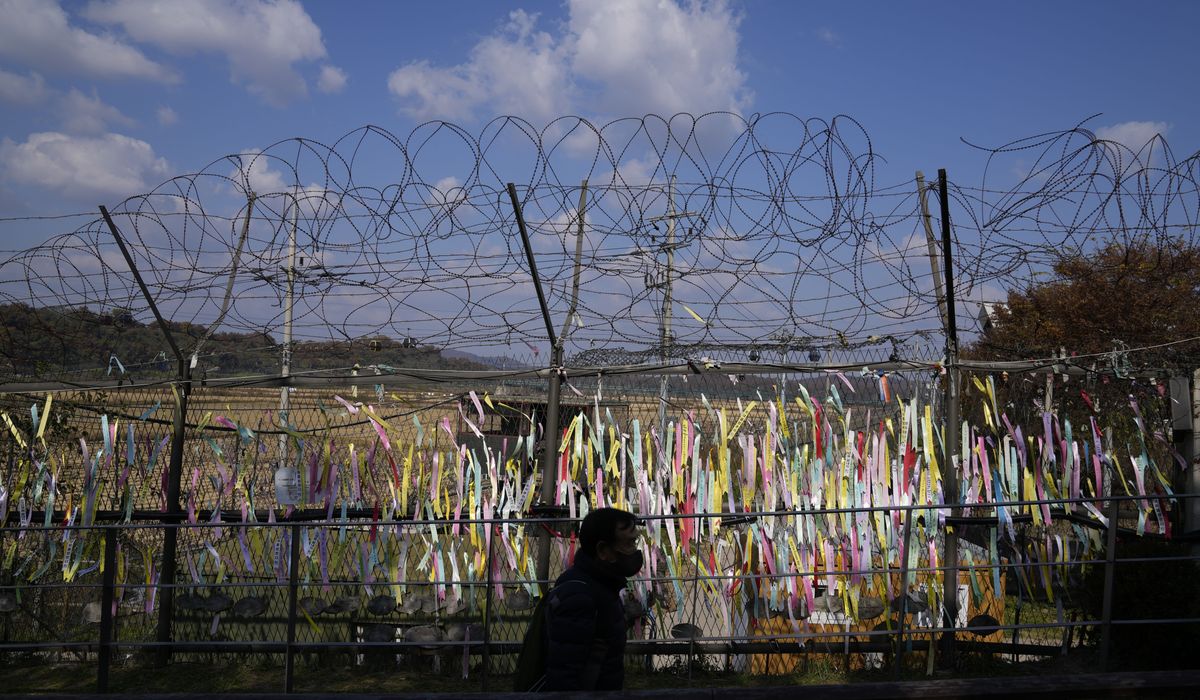
North Korea sent a fresh barrage of missiles toward South Korea on Wednesday, including at least one that crossed over the de facto maritime boundary between both countries. The unprecedented launch of more than 20 missiles, the first that sent one missile across the so-called Northern Limit Line since the peninsula 70 years ago, prompted Seoul to fire three missiles back across the NLL.
North Korea launched at least 23 missiles off its eastern and western coasts on Wednesday, the Associated Press reported, citing South Korean government sources. The weapons were believed to be all short-range ballistic missiles or suspected surface-to-air missiles, although there has been mounting speculation by the U.S. and its allies that Pyongyang is building toward its first test of a nuclear warhead since 2017, a move that would send regional tensions soaring.
South Korean military leaders said the North’s launch was “very unusual and absolutely unacceptable” and said its own response was “proportionate to North Korea’s provocations.” President Yoon Suk Yeol held an emergency meeting of his top security advisers on Wednesday, calling the North Koreans’ latest move “a virtual violation of our territorial waters.”
“The Joint Chiefs of Staff fired three precision air-to-ground missiles from the Air Force’s F-15K and KF-16 [jet fighters] into the high seas north of the NLL in the East Sea, and at a distance corresponding to the area where the missiles were provoked by North Korea,” South Korea’s top military body said in a statement.
South Korean officials said they detected the missile launches and were able to successfully track their flights. The salvo prompted air raid sirens in the country, the first time such an alarm has been sounded in at least six years, they said.
“It is for this reason that our military has taken a proportional response while declaring a decisive response,” JCS officials said in a statement. “This is the first time that our military’s missiles have crossed the NLL.”
SEE ALSO: White House accuses North Korea of shipping arms to Russia
North Korea has never recognized the NLL, which closely tracks its coastline, as an official border, but traditionally has shied away from infringing on it so blatantly, analysts said.
Following the missile launches, Seoul accused North Korea of violating an agreement to prevent military clashes in the border area. They said Pyongyang appears to have ordered the firing in response to the start of “Vigilant Storm,” a large-scale military exercise held by South Korea and the U.S.
“Vigilant Storm” is an annual training event that includes U.S. and South Korean units practicing a number of air missions, such as close air support and defensive air operations. The Royal Australian Air Force was scheduled to deploy a KC-30A air refueler to South Korea to train with both nations, officials with U.S. Forces Korea said.
About 240 combat aircraft and thousands of military personnel from both countries will take part in the exercise, which is scheduled to end on Friday.
“Support forces on the ground will also train their base defense procedures and survivability in case of attack,” U.S. officials said.
White House spokesman John Kirby said the North Korean missile launches did not pose an immediate threat to U.S. military personnel in the region. He added that the U.S. would ensure it had sufficient capabilities in the area to defend its allies.
Analysts say the North Korean string of recent missile launches could be a sign that Pyongyang’s strategy in the region is failing to achieve its goal. David Maxwell, a retired Army Special Forces colonel now with the Foundation for Defense of Democracies think tank, said they could be a sign of desperation by North Korean leader Kim Jong Un.
“Kim’s political warfare and blackmail diplomacy strategies have failed,” he said. “South Korea and the United States refuse to appease him. The [South Korean-U.S.] alliance must hold firm and not give in to Kim’s demands.”
He said South Korea and the United States should increase pressure on Pyongyang with a “comprehensive information and influence campaign” to force Mr. Kim to change his behavior or face an uprising by his military or his people.
Park Won-gon, a professor of North Korean studies at Ewha Women’s University, noted that Pyongyang ordered the missile launches while the South was still reeling from the devastating stampede that killed more than 150 pre-Halloween revelers in Seoul’s popular Itaewon district.
“North Korea has kept firing missiles —even during China’s important party congress. In addition, the North had staged military provocations in consideration of South Korea’s domestic situation to some extent,” he told the Korea Times newspaper. “But the missile launch during the South’s mourning period of the Itaewon crowd crush means that it will only focus on gaining recognition as a nuclear weapons state without taking anything into consideration.”
— This article was based on wire service reports.





